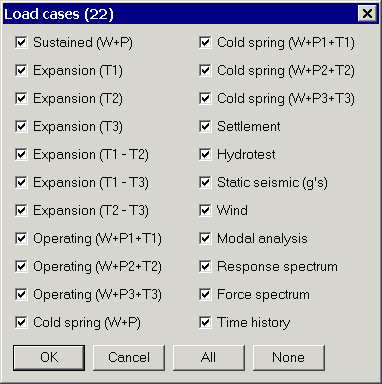Software Solutions
- CAEPIPE
- CAEPIPE 3D+
- checkSTRESS
- dataTRANSLATORS
- HOTclash
- PEXit
- Pricing Request
- Download Free Evaluation
- Download CAEPIPE 3D+
- Download Free Review Module
- Customer Support
Engineering Services
- Design and Engineering
- INFOplant™ System
- Engineering Management
- List of Projects
- Project Gallery
- Project Videos
Learn More
Company Information
Tips July - September 2003
Rotating a CAEPIPE model
You can rotate a model or a part of it about the global axes. CAEPIPE will adjust the offsets for the new orientation.
Example
Let us rotate the branch line of the familiar Sample model. The branch line is between nodes 30 to 80 (rows 8 to 11 in the layout window). Say, we wanted this branch line to be routed in the -X direction (i.e., it has to be rotated 180° about Z-axis).
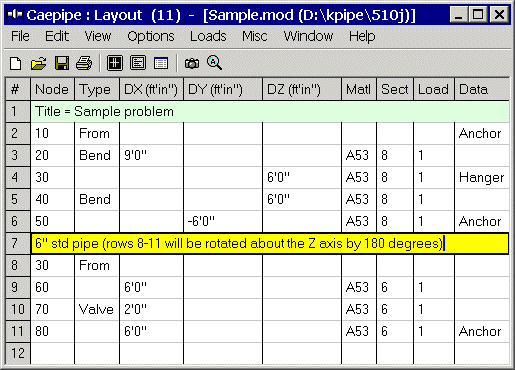
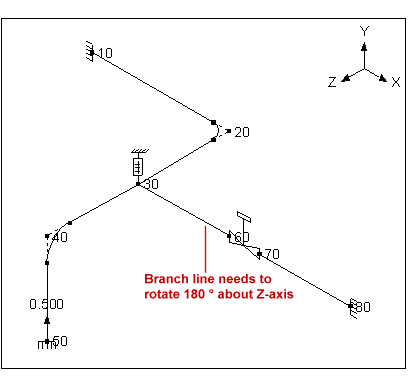
Select Rotate from the Edit menu and type in the shown values.
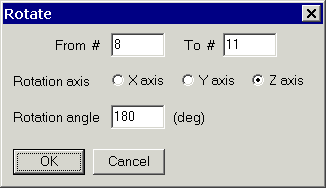
Notice the rotated offsets (now they are in the -X direction).
One thing to note: The valve additional weight is shown in the negative direction because of the rotation. If you need to make it positive, edit the Valve (Ctrl+T) properties and change the DY offset for it from -18 to 18 inches.
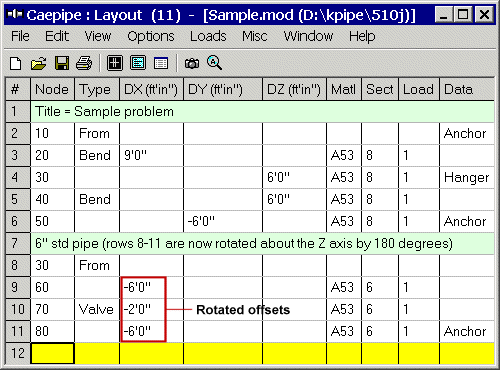
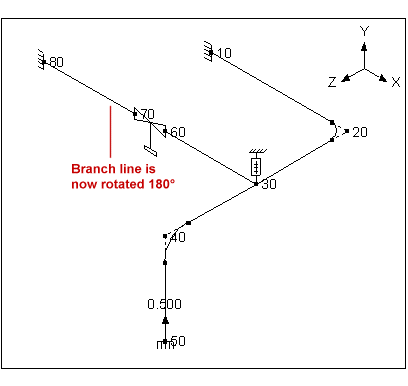
Deleting a range of rows in CAEPIPE
You can delete either one row at a time or a range of rows in the Layout window.
To delete one row, simply press Ctrl+X with the highlight on the row.
To delete a range of rows however, you need to select menu Edit > Delete command.This brings up a dialog into which you type in the From row # and the To row # to mark the range for deletion. When you click on Ok, the range is deleted. If you want to delete till the end of the model, either type in a big number for "To #" such as 9999 or type in the number (of rows) shown in the title bar in parentheses.
This command is also available from the context menu (by right clicking), in the Offsets (DX, DY, DZ) columns.
Note that, presently, no deletion can be undone.
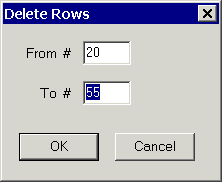
Selecting Load Cases for Analysis
In layout, you can select load cases for analysis by selecting "Load Cases (xx)" under the Loads menu. The number of load cases selected is shown by the number in parentheses.
Most of the time, selecting a load case is as simple as checking the corresponding checkbox.
For a few others (Cold Spring, Response Spectrum, Wind, Time History, etc.), load cases appear in this dialog only after you input the related data. For example, to perform a Response Spectrum analysis, you need to
- First input Spectrums (under Misc menu)
- Then, select those spectrums under the menu Loads > Spectrum
- Finally, you go into Load cases and check the box next to Response Spectrum
As another example, the Cold Spring load cases do not show up in this dialog if you have not input a "cut pipe" element in layout. Further, multiple expansion and operating load cases appear here only when you set multiple thermal loads under Options > Analysis > Temperature in the Layout window.
